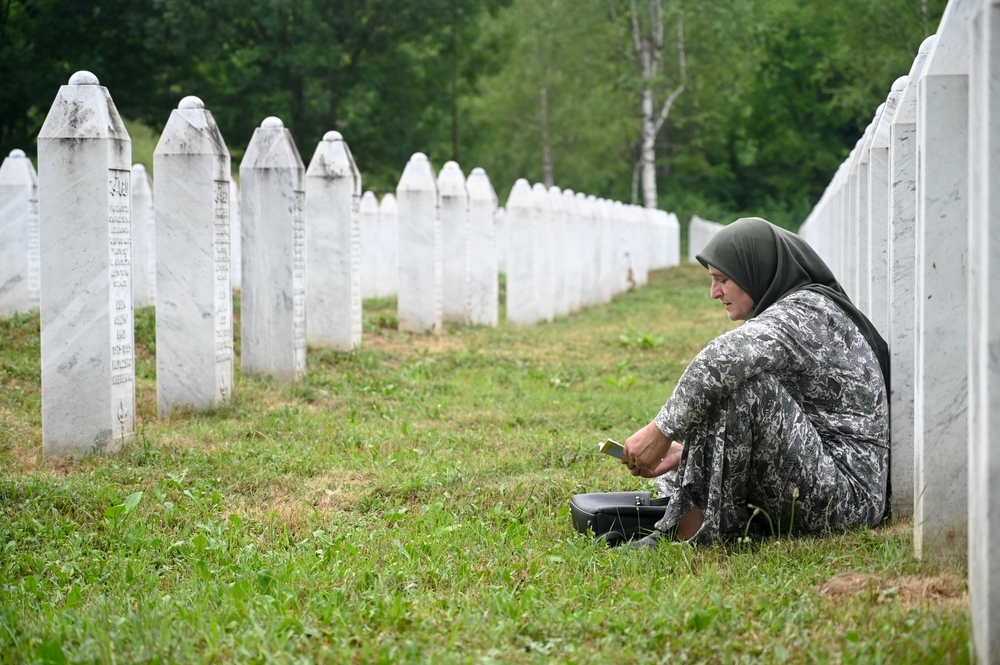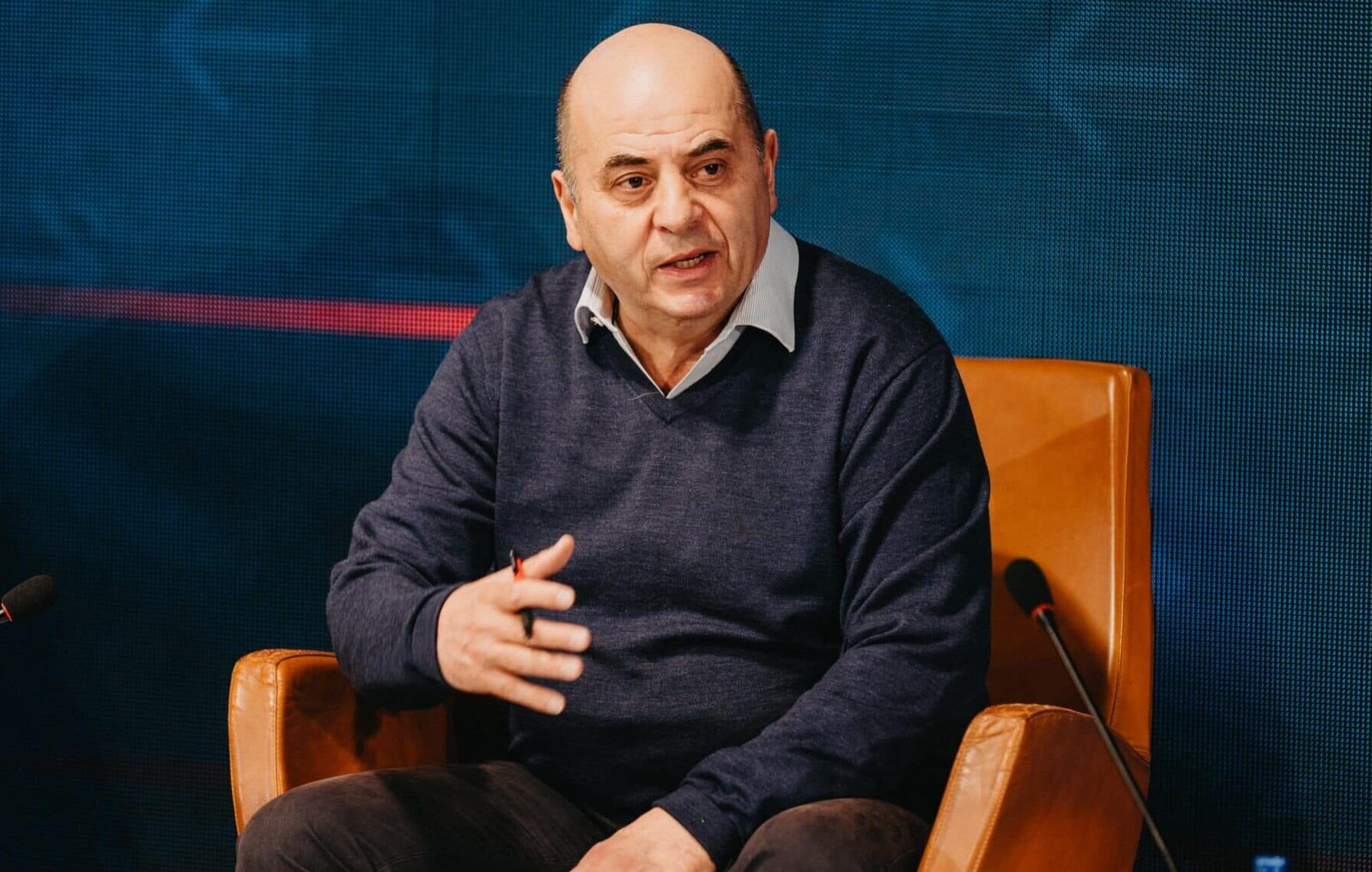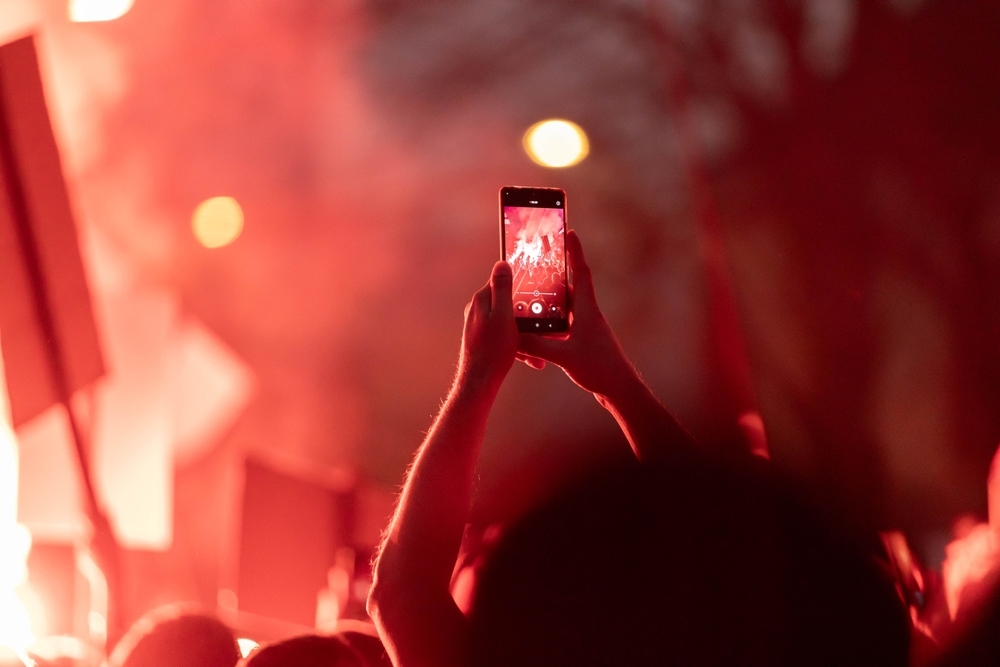IWPR: Calls for War Memorials Divide Bosnia
All over Bosnia, the sites of atrocities often lack any kind of formal memorial to commemorate them. Observers say that this reflects an ongoing reluctance by the ethnic group whose members committed the crimes to acknowledge that they occurred at all. From IWPR
This article was originally published by the Institute for War and Peace Reporting (IWPR)
The small cream-coloured house sits on an expanse of green grass, slightly removed from the rest of the nondescript buildings that comprise this iron ore mine in north-eastern Bosnia.
These days, there is nothing to indicate that what became known as the White House was used to torture, rape and murder many of the more than 3,000 Bosniaks (Bosnian Muslims) and Croats who were imprisoned at the mine from May to August 1992, after Bosnian Serb forces captured the town of Prijedor as war erupted throughout Bosnia.
All over Bosnia, the sites of atrocities often lack any kind of formal memorial to commemorate them. Observers say that this reflects an ongoing reluctance by the ethnic group whose members committed the crimes to acknowledge that they occurred at all.
Transitional justice experts warn that this not only affects the survivors’ ability to come to terms with their past but also harms efforts aimed at promoting future coexistence. And in some cases where memorials have been established, they either contain no educational components or reflect a partisan interpretation of history, which only deepens existing divisions.
There can be little doubt over the events which took place at the Omarska camp, as it became called. It has featured in several trials at the Hague tribunal, where judges found that “the prisoners were fed little, the food was usually rotten, and they had almost no water”. Women prisoners were raped – often repeatedly – and in one documented instance a man was forced to bite off the testicle of a fellow prisoner.
Detainees were regularly brought to the White House and, according to tribunal records, “tortured in front of each other. Sometimes they were made to beat one another. A father was beaten to death in front of his son. The men shrieked with pain. There was blood on the walls and on the ground”.
Omarska was closed in August 1992 after journalists exposed conditions in the camp and photographs of the emaciated prisoners sparked an international outcry. In 2004, the ArcelorMittal steel corporation took over the mine, and continues to operate it today.
“If you go to [Omarska] and you are not accompanied by someone who has been [there], you would not have a clue what happened there,” said Satko Mujagic, a survivor of the camp who immigrated to the Netherlands in 1993.
“If you look at what happened there in only three months – how many people were killed and under what circumstances – we really need this place to be preserved.”
Victims’ advocacy groups say the same thing about other camps in the area – most notably Trnopolje and Keraterm – where several thousand non-Serbs were subjected to “abusive and inhuman conditions” and “tormented relentlessly”, tribunal judges found.
The victims’ groups say they are eager to create memorials on the grounds of these and other camps in what is now the Serbian part of Bosnia, Republika Srpska, RS, but have so far been unsuccessful. In most cases, they say they have been denied access to these places by local Bosnian Serb officials, or have to ask permission even to visit.
Rajko Vasic, the secretary general of the ruling RS party the Independent Alliance of Social Democrats, SNSD, told IWPR that the “marking of places of suffering is a planned creation of Bosniak patriotic policies whose only aim is to represent the Serbs and the Serb people as genocidal.
“Don’t live in the illusion that marking memorials would either hamper or contribute to the reconciliation process, or improve understanding in the country. It would only be of use to Bosniaks.”
According to Murat Tahirovic, the president of the Association of Concentration Camp Detainees in Bosnia, survivors will sometimes place small plaques at the sites themselves – like one at Keraterm, a former ceramics factory – but in many cases these have been removed or defaced.
“We are prevented from putting up any kind of memorial at any site we certainly know has been a [place of] suffering and where innocent people were killed, and this is a sad fact,” he said.
Local and national authorities deny permission for the construction of substantial monuments or memorials because they say there is no national law to regulate commemoration, Tahirovic told IWPR.
“How come it is possible that when someone dies in a car accident, a memorial plaque is set up, but when one wants to commemorate the suffering of many people in a war, that is not regulated by law?” he asked.
To some observers, the legislation issue is an excuse used by politicians who want to further their own agendas.
“The absence of state-level law on memorials is something that the majority of the current ruling parties – which are seriously intent on using the past to further divisions among people for their own specific goals – use to preserve their monopoly on the truth,” said Refik Hodzic, the former outreach coordinator for Bosnia at the Hague tribunal.
“Basically in the area that [politicians] control, where they are the majority in ethnic terms, they will not allow memorials [for victims of another ethnic group], especially of an educational nature,” Hodzic continued, noting that this is not just the practice of Bosnian Serbs, but of all nationalities in Bosnia in areas where they form the majority.
Given such resistance, some believe that a law on memorials is becoming necessary.
Kemal Pervanic was 24 when his village was attacked and he and his brother were taken to Omarska, an experience he recounts in his 1999 book The Killing Days. Pervanic now lives in England, and studied memorials in Prijedor for his dissertation.
Pervanic acknowledges that memorials are sometimes exploited by groups in Bosnia to perpetuate prejudices and distort recent history. He believes people should guard against such abuses, but this shouldn’t prevent memorials being erected.
“Ideally it would be perfect to have a memorial law at the national level which could actually prevent memorials from being built to spread hatred," he said.
“I’ve read some articles where politicians have said, ‘Well we haven’t even attempted to pass such a law, because it would not pass.’ Well there is no reason why somebody should not try. If it fails, then you try again, and again and again.”
There may be few other options, said Branko Todorovic, the executive director of the Helsinki Committee for Human Rights, HCHR, in RS.
“I do think that the authorities [in Bosnia] will have to face the need to pass a law on this issue. There is no other way to regulate this area,” he said. “I am very much convinced that the policy of restricted permissions will continue as long as there is a legal framework which makes it possible to freely interpret requests and dismiss them.”
CERTAIN EXCEPTIONS
Memorial plaques or monuments are sometimes permitted, but in places “hidden away from the public eye, in villages where returnees live, or religious memorials at the cemeteries where the victims are”, Hodzic said.
One example of a larger Bosniak memorial is in the town of Kozarac, near Prijedor, which was almost entirely Bosniak before it was captured by Bosnian Serb forces on May 24, 1992. After that, non-Serb inhabitants where either killed or expelled, and their houses destroyed.
Today, Kozarac is once again mostly Bosniak because of an influx of returnees to the area, and the memorial to the town’s war victims opened in July of this year. The interior of a large grey stone dome is inscribed with the names of 1,226 Kozarac citizens who were killed during the conflict. The exterior of the dome is covered with electric candles – one for each of the victims – which light up at night.
The memorial was the result of “a lot of lobbying”, explained Mujagic, who grew up in Kozarac.
“It’s all politics,” he said. “Kozarac was also already a small enclave… 95 per cent of the population there is Bosniak, so probably the Serb authorities don’t care so much. In a way, it is a monument for Bosniaks, in ‘their own town’.”
Todorovic believes that the local authorities felt pressured “to allow at least one memorial”.
“Kozarac, due to the demographic structure, was probably the smallest risk,” he said.
In addition, the Kozarac monument does not include any educational components, which tend to provoke the most opposition. Each side is intent on avoiding anything which might contradict the main narrative of war upon which they rely, observers say.
“These polarised and entrenched memory narratives are really a form of conflict under a different heading,” explained Louis Bickford, an adjunct professor at New York University and the former director of the memory and accountability programme at the International Centre for Transitional Justice.
This is evident in Prijedor itself, where the memorial on the grounds of the Trnopolje camp is not for the Bosniak and Croat civilians who were killed there, but for Bosnian Serb soldiers who died elsewhere during the war. The grey stone pillar is flanked by carved angel wings, and there is a large cross in its centre.
“It’s about asking whether that kind of symbolism is the kind of symbolism that contributes to long term peace, or the kind of symbolism that actually keeps a conflict festering,” Bickford said. “My strong suspicion is that it’s the second kind.”
The reaction of Bosniak survivors would indicate as much.
“They are practically laughing at us and mocking us with this act,” said Sabiha Turkovic, who was detained at Omarska, Trnopolje and Keraterm. While imprisoned, she was raped, beaten and tortured on numerous occasions, she told IWPR.
Tahirovic called it an “additional provocation” on the part of government authorities “who wish to show…that their memorial plaque is important and should stay there, while [ours] can’t”.
Indeed, municipal authorities will often permit memorials to be built for victims from their own ethnic group while blocking memorials for anyone else, survivors and observers say.
The Serb monument at Trnopolje also reflects a narrative in the RS that barely acknowledges non-Serb victims.
“The fact that 3,500 people from Prijedor, non-Serbs, died [in the town] …does not exist in terms of the public narrative,” Hodzic said. “The reason is that the government and the authorities, the ethnically-based ruling establishment, will not allow anything to threaten their hold on what the truth about the war is.”
Competing ideas of what exactly that truth is has resulted in increasingly nationalist rhetoric, especially from politicians in RS.
Recently, Milorad Dodik, who is now president of the entity, denied there had been a genocide in Srebrenica, despite the judgements of two international courts. He has also talked about the possibility of the entity seceding from the rest of Bosnia.
To observers, this kind of rhetoric is deeply intertwined with the issue of memorials.
“The reason for the opposition to memorials is much deeper than just being against [them],” Todorovic of HCHR said. “It has a lot to do with the overall denial that those crimes were committed at all.”
Some say that such a refusal to come to terms with the past permeates the political landscape in Bosnia.
“It’s quite clear that this whole obstruction [of memorials] is part of the policy of denial,” said Dion van den Berg, a senior policy advisor at the Dutch organisation IKV Pax Christi, which has long been active in the western Balkans.
“Things have been getting worse in terms of the denial of war atrocities,” Van den Berg said, adding that while this is most apparent in the RS, it also happens in Bosniak- and Croat-dominated areas as well.
“I think it’s important for the international community to speed up their involvement with the dilemma of memorials.”
At the moment, Van den Berg continued, the international community is most concerned with Bosnia’s aspirations to join the European Union.
“They are thinking that the EU accession will solve all of [Bosnia’s] problems,” he said. “This is not the case.”
Hodzic stressed that the EU must make clear to Bosnia that the public “denial of judicially established facts…simply will prevent any progress of Bosnia and its expressed desire to join the European Union”.
“This must be raised as one of the primary issues, not only because of what impact it has on the victims and how it divides people, but because it creates potential for future conflicts,” Hodzic said.
“The traumas of the Nineties are so serious, and the narratives that are being built around these traumas are the backbone of ethnic identities here. If we don’t address these issues, and if we don’t address them soon, they will become cemented and we will basically be waiting for them to explode in all of our faces.”
WHO ARE MEMORIALS FOR?
While most survivors and observers agree that memorials should be created at the sites of mass atrocities, there is much discussion on the purpose they should serve. Should memorials be for sake of the victims? Or should they be used to educate visitors and foster reconciliation with the surrounding communities?
Omarska survivor Pervanic said that in recent years there have been an increasing number of smaller memorials created by Bosniaks in Prijedor, but that many of them are religious in nature and use divisive language.
“People put inscriptions in these memorials like, ‘They were killed in a beastly way,’” he said. “If you have visitors or children going past, they will think, ‘Oh, the Serbs are beasts.’”
He stressed that “the messages we create by building these memorials are so important.
“It shouldn’t be to portray blame on someone, but rather to build lessons for the future. The way I see it, this is not what ‘they’ did to ‘us’ because for me, we are all humans and this is what human beings do to each other in times of war. Wars are never black and white.”
Along those lines, he said that memorials should be “living monuments” which educate people about what happened there.
Several of the survivors interviewed for this story indicated that they would like to see the former prison camps turned into a kind of museum, and that it was not enough just to have a monument with names inscribed on it.
Of course, these are exactly the kinds of memorials that have been the cause of such resistance.
“When I went back a couple of times [to Omarska], I spoke to some Serbs and they said, ‘We should leave it for the next 50 years and time will take care of it,’” Pervanic said. “Well, time doesn’t take care of it. If we start dealing with it straight away, we’ll resolve it quicker. Otherwise, untold stories turn into myths over a period of time, and that’s quite dangerous.”
Both Pervanic and fellow survivor Mujagic were active in efforts to create a memorial at Omarska, which in 2005 ArcelorMittal agreed to finance. At the time, the company said it would preserve the White House, which would eventually be turned into a memorial centre. It also engaged mediators from a British charity to work with the local Serb community, Bosniak returnees and those living the diaspora.
Pervanic said that he was initially eager to take part in the project.
“In hindsight, I think my optimism was a little bit naïve,” he told IWPR. “I was thinking of all the good things that could come out if we tried to analyse and understand the whole situation.”
However, among other issues, he said that the “Serbs were never ready to have a memorial on the site of the Omarska camp”.
Prijedor mayor Marko Pavic publicly opposed the initiative, and additional complications led ArcelorMittal to suspend it in February 2006. The company subsequently stated in a press release that it “ultimately hopes that it will prove possible to continue with developments and see the project through to a conclusion supported by all parties”.
This has yet to happen.
Pervanic now says that he’s not sure a memorial can be imposed on a community still so at odds about its past.
“A lot of survivors say ArcelorMittal are the majority owners of the company so they can impose this solution,” he said. “I’m not sure imposed solutions can work.”
He pointed to the Srebrenica memorial and cemetery in nearby Potocari, which was built in 2003 to commemorate the massacre of nearly 8,000 Bosniak men and boys at the hands of Bosnian Serb forces in July 1995.
Like Prijedor, Srebrenica is now part of RS, and the memorial there was ultimately made possible because of direct intervention from the Office of the High Representative in Sarajevo, the international agency tasked with implementing aspects of the Dayton peace accords, which ended the Bosnian war.
“The very next day after the [Srebrenica] commemoration in Potocari, the Serbs had their own commemoration [for their own victims],” Pervanic said. “What’s the end product? Is it better for peace and reconciliation? For the future of Bosnia? I don’t know.”
Memorials offer the opportunity to further reconciliation, Pervanic continued, and also the chance for debates – which could include a wide range of people – about the issues involved.
“When I think about the war, I try not to think, ‘My neighbours burnt my village and put me in a camp.’ I’m trying to understand why, what were the underlying causes of all of this,” he said. “That’s why I’m talking about people having debates, where all kinds of opinions will be aired. It will make people think about the much wider issues, rather than just crude facts. If they think like that, then it makes perfect sense to have these competitive narratives.”
However, the idea of reconciliation – especially in the context of memorials – can be a very problematic one, noted Van den Berg of IKV Pax Christi.
“I never use the word reconciliation,” he said. “It’s not up to me to decide when people should reconcile. Imagine someone stepping up to you – when you’ve lost your father and brother – and saying, ‘Well, it’s been 15 years, move on with your life.’ It’s impossible. It’s really up to people themselves to decide how and when they should reconcile.”
He said that the Bosniak and Serb communities cannot be “forced” to agree on what happened.
“One has this particular truth, and this one has another,” Van den Berg continued. “It will take decades before you can canonise history, if you reach that point ever.”
WAYS FORWARD
After the Holocaust, it was the Germans who built the memorials for murdered Jews, Mujagic said.
“The nation on whose behalf this all happened should do it, and you can’t impose it, but on the other hand, if we just sit and wait for them, then nothing will ever happen,” he said.
“We can’t wait for them. We should continue ourselves… to make sure these crimes are visible to all. At some point, the politicians will not be able to ignore it anymore. It will become part of their daily life. It’s not going to happen tomorrow or even in a year, but in five or ten years there will be enough attention… at some point you can’t ignore it anymore because it’s there.”
Mujagic said he hasn’t given up on creating a memorial at Omarska. In 2008, five NGOs – including his own organisation, Optimisti 2004 – joined together and planned to write letters to local authorities and also organise a conference about the camp. However, he said that, so far, only one public discussion had been organised in Prijedor, in addition to twice-yearly visits to the former camp.
“The main reasons are the politics, which became more radical in RS and Prijedor, but also in Sarajevo to some extent,” Mujagic said. “We found it very difficult to start writing letters asking for this memorial when everything is being politicised in Bosnia. We don’t want Omarska to be part of politics but part of Bosnian and European history.”
Observers say that while memorials are almost always politicised in Bosnia, their content doesn’t have to be.
“Memorials can definitely be non-political; however, will they always be interpreted politically? Maybe yes,” Bickford, the New York University professor, noted. “But I think the intention behind them can be non-political, and the design behind them can be non-political.”
Pervanic said that, for him, having at least the White House preserved as a memorial is a way not only to educate others, but also an important part of coming to terms with what happened to him there.
“Speaking as a survivor, I feel that if I have a need to go back, I should be given access to that place,” he said. “And if there’s a memorial, then I can go back and deal with my past.”
Omarska, he said, should serve as a warning of what not to do to other human beings – for Serbs and non-Serbs alike.
“Those crimes were perpetrated against me, I was nearly killed there,” he said. “The cycle of violence should actually stop with me.”
Mujagic agreed, saying that Omarska should serve “as a warning of madness which should never happen to anyone”.
Along those lines, both said that there should also be memorials in places where Serbs were imprisoned during the war.
Pervanic cited the example of the Celebici camp in southern Bosnia, where Serb detainees were murdered, tortured and raped by Bosniak and Croat guards, Hague tribunal judges found.
“It doesn’t matter that there was a smaller number of people there, [they] suffered inhuman treatment, and I feel such places should be marked as well,” Pervanic said. “For example, if Muslims go to visit this place, they should know what members of the Muslim group in Bosnia did to those people there.”
So far, there haven’t been any formal requests to create a memorial at Celebici, said the Helsinki Committee’s Todorovic. The former camp is now being used by the Bosnian armed forces, which would make obtaining permission extremely difficult, he added.
There was an attempt to place a memorial at the state courthouse in Sarajevo, formerly the Viktor Bubanj barracks, where Serbs say they were imprisoned and abused during the war, but this request was denied, Todorovic said. The crimes allegedly committed there have never been the subject of any court cases.
In general, the number of formal requests from Serb organisations is “far under” that of non-Serb organisations when it comes to memorials, Todorovic noted.
Slavko Jovicic, a Bosnian Serb who says he was detained at the Bubanj barracks, led the initiative to have a memorial plaque placed there.
“Nobody should have illusions about forgetting this overnight, which is why I plead for having all places of suffering [marked], regardless of the people’s nationality or religion,” he said.
However, he said that Bosnia would be “covered” with memorials if this was done at every place where crimes were committed.
“Ultimately, what would it lead to if we marked all of Bosnia with memorials where someone has suffered or been abused?” Jovicic said. “That wouldn’t give us a chance for future coexistence, it would keep bringing us back to times which were unhappy for all three peoples.”
But other survivors say that finding a consensus over these issues, however difficult, is vital for future coexistence.
“In a sense commemorating the past will clear our future,” Mujagic said. "It will clear the way to live together normally.”
Rachel Irwin is an IWPR reporter in The Hague. Velma Saric is an IWPR-trained reporter in Sarajevo.











